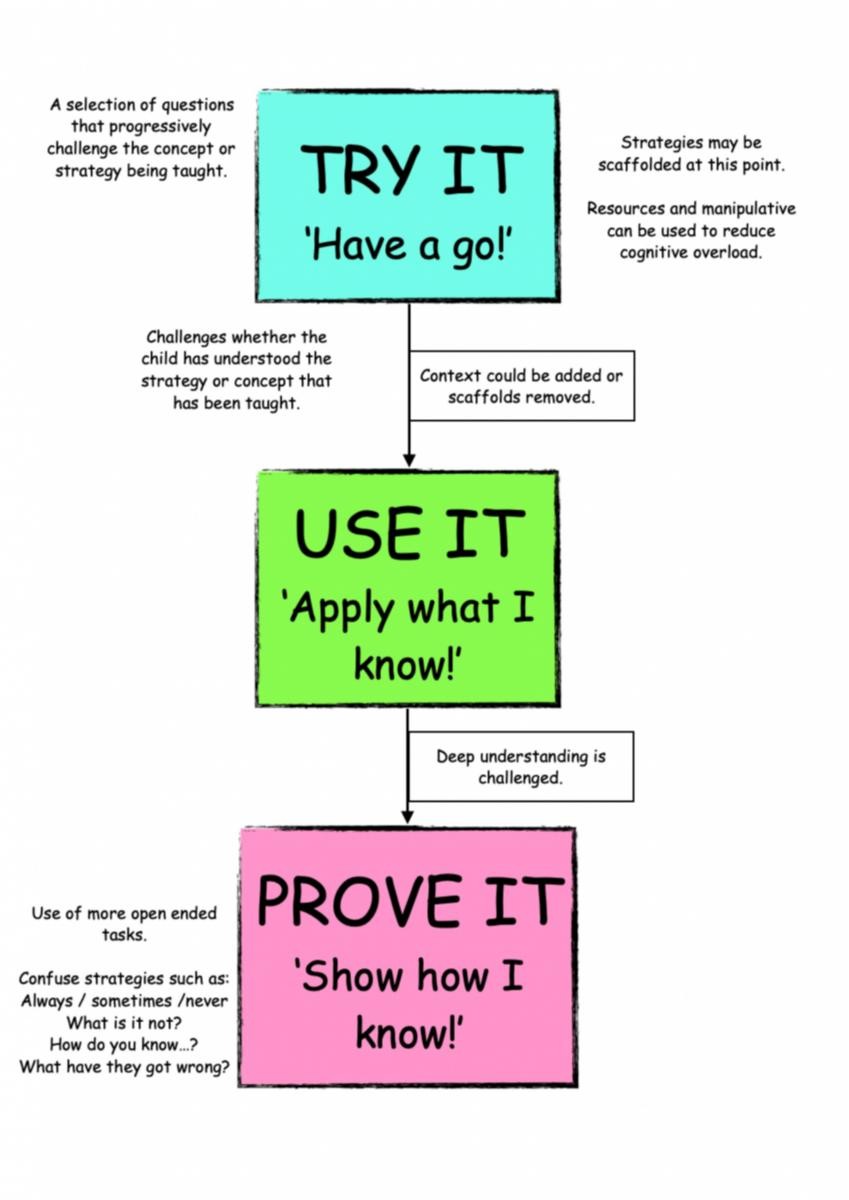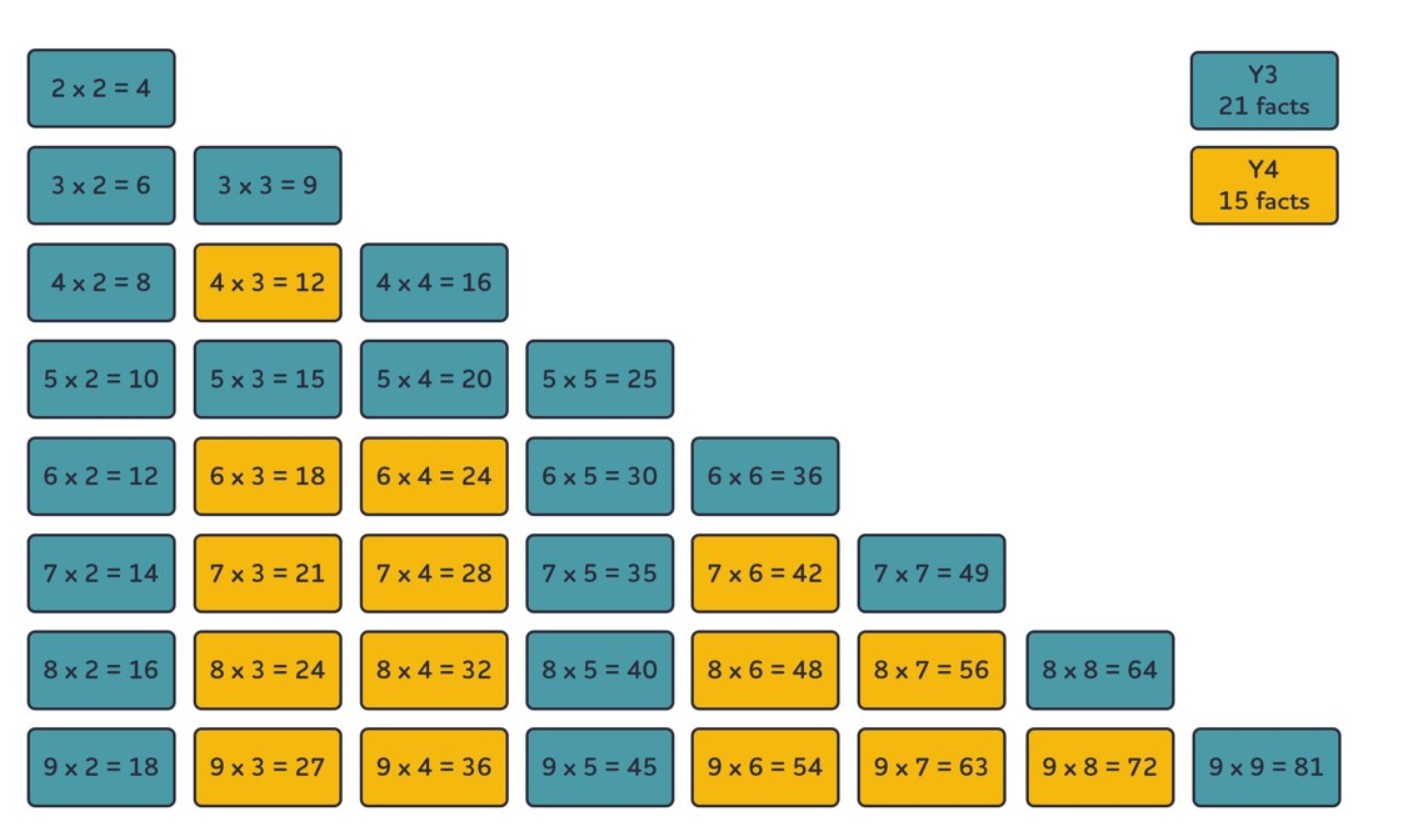Maths Curriculum Statement: Power Maths
Intent
At Newlyn School, we aim to develop confident, resilient mathematicians who enjoy problem-solving and can apply their mathematical understanding in real-life contexts. Using the Power Maths scheme, we ensure a mastery approach that promotes deep understanding, fluency, reasoning, and problem-solving for all pupils. Our curriculum is designed to be inclusive, ambitious, and aligned with the National Curriculum, ensuring all children make sustained progress.
Implementation
We follow the Power Maths programme, a DfE-approved scheme built around the principles of mastery. Lessons are:
- Structured and consistent, with small-step progression
- Interactive and engaging, using visual models and real-life contexts
- Differentiated, with built-in support and challenge for all learners
Each lesson follows a clear structure:
- Discover – a real-life problem to spark curiosity
- Share – guided discussion and exploration
- Think Together – collaborative learning and modelling
- Practice – independent work with increasing challenge
- Reflect – consolidation and metacognitive thinking
Teachers use formative assessment throughout lessons and summative assessments at key points to monitor progress. Support materials, including journals and online resources, help pupils articulate their thinking and deepen understanding.
Impact
Pupils develop a secure and deep understanding of mathematical concepts. They are able to:
- Reason mathematically and explain their thinking
- Solve problems with increasing confidence and independence
- Make connections across mathematical ideas
Progress is tracked regularly, and gaps are addressed promptly through targeted support. Pupils are assessed against age-related expectations and mastery criteria. By the end of each key stage, children are well-prepared for the next phase of their mathematical learning, with strong foundations and a positive attitude towards maths.
Power Maths - An introduction to Parents
Maths Fluency Curriculum Statement
Embedding Mastering Number (KS1 & KS2) and Number Sense Development
Intent
Our intent is to ensure all pupils develop strong number fluency and automaticity, forming the foundation for confident mathematical reasoning and problem-solving. Through the Mastering Number programmes (KS1 and KS2), we aim to build deep understanding of number relationships, efficient mental strategies, and rapid recall of key number facts. Fluency is taught explicitly and progressively, enabling pupils to access the wider maths curriculum with confidence and competence.
Implementation
Fluency is taught outside of the main maths lesson in short, focused sessions that allow pupils to rehearse and embed core number facts in isolation. This approach ensures targeted skill development and avoids cognitive overload during broader conceptual learning.
-
In KS1, pupils follow the Mastering Number (NCETM) programme, which focuses on:
- Subitising and number composition
- Number bonds and place value
- Visual representations (e.g. rekenreks) to support conceptual understanding
-
In KS2, pupils continue fluency development through Mastering Number KS2, which builds on KS1 foundations and introduces:
- Multiplicative reasoning and times tables fluency
- Strategic mental calculation methods
- Deepening number sense through structured rehearsal and reasoning tasks
To support fluency in multiplication and division facts, pupils regularly use Times Tables Rock Stars (TTRS). This engaging digital tool promotes rapid recall and supports personalised practice, helping pupils to internalise key facts efficiently.
Fluency sessions are sequenced to ensure progression across year groups, with regular opportunities for retrieval, rehearsal, and consolidation. Teachers use NCETM guidance and diagnostic tools to monitor progress and adapt teaching to meet pupil needs.
Impact
Pupils develop automaticity in core number facts, enabling them to:
- Recall and apply number facts quickly and accurately
- Use efficient mental strategies for calculation
- Approach problem-solving tasks with greater confidence and independence
Progress is monitored through informal assessment, NCETM tracking tools, and TTRS data. Pupils are aware of their fluency goals and celebrate progress through regular feedback and recognition. The impact of fluency teaching is evident in pupils’ ability to access and succeed in wider maths learning, laying strong foundations for future mathematical achievement.
Understanding Mastering Number: A Guide for Parents
At Newlyn School, we use the Mastering Number programme (developed by NCETM) to help children build strong foundations in maths. This approach focuses on developing fluency—the ability to recall and use number facts quickly and confidently.
Key Teaching Principles
-
Choral Responses
- Children answer questions together out loud (like a chant).
- This repetition helps facts stick in their memory and builds confidence.
Example:
Teacher: “What is 5 and 3?”
Children: “5 and 3 make 8!” -
Speaking in Full Sentences
- Children are encouraged to explain their thinking clearly.
- This helps them understand why an answer is correct, not just what it is.
Example:
“I know that 6 and 4 make 10 because I can see 6 red beads and 4 white beads on the rekenrek.” -
Making Connections
- Children learn how number facts link together.
- For example, knowing that 3 + 7 = 10 helps them understand that 10 – 7 = 3.
Example:
“If I know 5 + 5 = 10, then I also know 10 – 5 = 5.” -
Fluency Practice Outside of Maths Lessons
- These short sessions happen separately from the main maths lesson.
- This allows children to focus just on building speed and confidence with number facts.
-
Visual Tools
- Children use tools like rekenreks (bead frames), ten frames, and number lines to help them see how numbers work.
Example:
A rekenrek shows 5 red beads and 5 white beads to help children visualise 5 + 5 = 10.
STEM Sentences for Maths Practice at Home
Here’s a bank of STEM sentences (structured sentence stems) that parents can use at home to support their child’s maths fluency and reasoning. These are designed to encourage children to speak in full sentences, explain their thinking, and build connections—key principles from the Mastering Number approach.
🔢 Number Sense & Fluency
- “I know that ___ and ___ make ___ because I’ve seen it on the rekenrek.”
- “___ is made of ___ and ___.”
- “If I know ___ + ___ = ___, then I also know ___ – ___ = ___.”
- “I can see that ___ is one more/less than ___.”
- “I know ___ is double ___ because ___ + ___ = ___.”
➕➖ Addition & Subtraction
- “I added ___ and ___ to make ___. I know this because I counted on.”
- “I subtracted ___ from ___ and got ___. I know this because I counted back.”
- “I used number bonds to help me solve ___. I know ___ and ___ make ___.”
- “I know ___ is near double ___, so I used that to help me.”
✖️➗ Multiplication & Division (KS2)
- “I know ___ times ___ is ___ because I’ve practised it on TTRS.”
- “If ___ × ___ = ___, then ___ ÷ ___ = ___.”
- “I used skip counting to find the answer to ___ × ___.”
- “I know ___ groups of ___ make ___.”
🧩 Reasoning & Problem Solving
- “I noticed a pattern: ___.”
- “I know this is true because ___.”
- “I checked my answer by ___.”
- “I used what I already know about ___ to help me solve ___.”
- “I can prove my answer by showing ___.”
🔁 Retrieval & Connections
- “This reminds me of when we learned ___.”
- “I used my number facts from ___ to help me with ___.”
- “I remembered that ___ is the same as ___.”
- “I’ve seen this before when we did ___.”
💡 Tips for Parents
- Encourage your child to say the full sentence, not just the answer.
- Ask follow-up questions like:
“How do you know?”
“Can you show me another way?”
“What’s the connection between these numbers?”
Mastering Number - An introduction to Parents
Number Sense
The programme develops recall of 36 core multiplication facts. Fluency in these facts provides the foundation for all written and mental multiplication and division. New facts are introduced and taught visually through the conceptual lessons, and aurally through the chanting of verbal sound patterns. Facts are learned to fluency through daily practice sessions with scores tracked daily and targeted support provided where needed.
How many of these facts does your child know?
Why not practice with the use of Timestables Rock Stars? https://ttrockstars.com/


